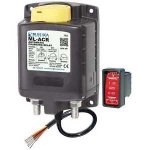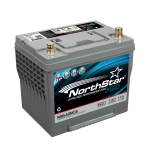Maxcustody
Explorer
Need some help here, not really in an area with any electrical specialists that I am aware of who may be able to help me diagnose my issue. So hopefully the fine folks here can offer some help..............Not really a mod I wanted to do.................had to order 2 new batteries they will be here next Friday. I went with North Star this time.
I have a dual battery setup and for some reason the starter battery has been dead a few times. Luckily I can link them together and it fires up, however not sure what the issue is..........Seems like it happens when it is the coldest. I am now living in West Virginia and no longer in California so maybe it was going bad and not as noticeable due to not being cold enough in California to bring it down. I think I may have let it go too low while camping, however not sure how that worked either due to my fridge being hooked up to the other battery. I have been off work due to an injury so the truck has not been going anywhere for days at a time.I have 2 Odyssey PC1400's, they are probably 2 years old. I have nothing drawing power I am aware of, I even disconnected my scan gauge which has been plugged in, thinking it may be that. I also turned off the breaker to all the rear outlets since nothing is back there right now anyway. I did take it in to Toyota, I was there getting my TPMS uploaded and had them test the batteries. Tech said he thinks it may be a charging issue. Starter battery was not registering same as other battery, other was full and starter was very low that tech said it told him to recharge to get a good reading.
When I get the new ones I will top them off and ensure everything is wired correctly before installing the new ones. I am no electrical guy, so a little puzzled...............any suggestions? I have the blue sea ACR as well as my isolator.
Here are some pics of current set up and new batteries I am replacing them with..................





I have a dual battery setup and for some reason the starter battery has been dead a few times. Luckily I can link them together and it fires up, however not sure what the issue is..........Seems like it happens when it is the coldest. I am now living in West Virginia and no longer in California so maybe it was going bad and not as noticeable due to not being cold enough in California to bring it down. I think I may have let it go too low while camping, however not sure how that worked either due to my fridge being hooked up to the other battery. I have been off work due to an injury so the truck has not been going anywhere for days at a time.I have 2 Odyssey PC1400's, they are probably 2 years old. I have nothing drawing power I am aware of, I even disconnected my scan gauge which has been plugged in, thinking it may be that. I also turned off the breaker to all the rear outlets since nothing is back there right now anyway. I did take it in to Toyota, I was there getting my TPMS uploaded and had them test the batteries. Tech said he thinks it may be a charging issue. Starter battery was not registering same as other battery, other was full and starter was very low that tech said it told him to recharge to get a good reading.
When I get the new ones I will top them off and ensure everything is wired correctly before installing the new ones. I am no electrical guy, so a little puzzled...............any suggestions? I have the blue sea ACR as well as my isolator.
Here are some pics of current set up and new batteries I am replacing them with..................





